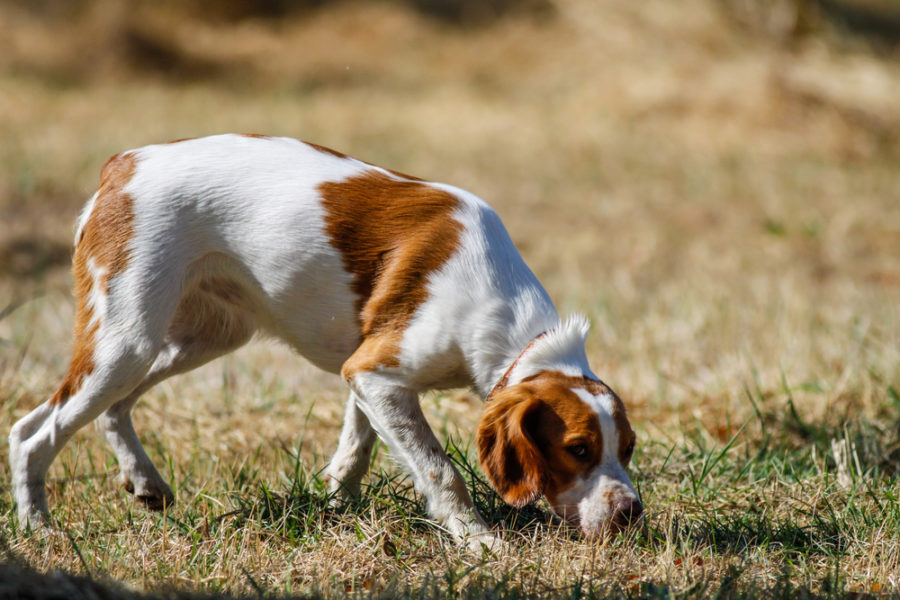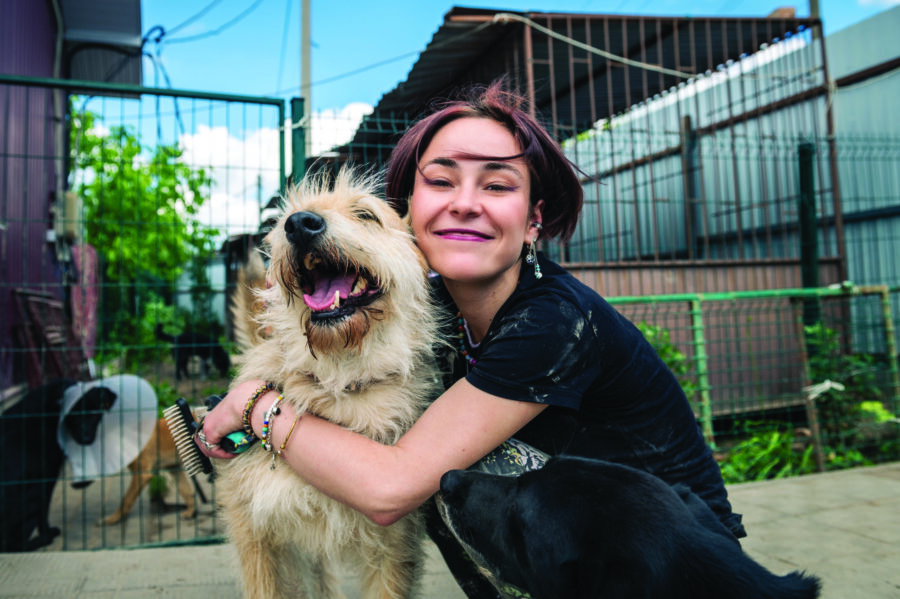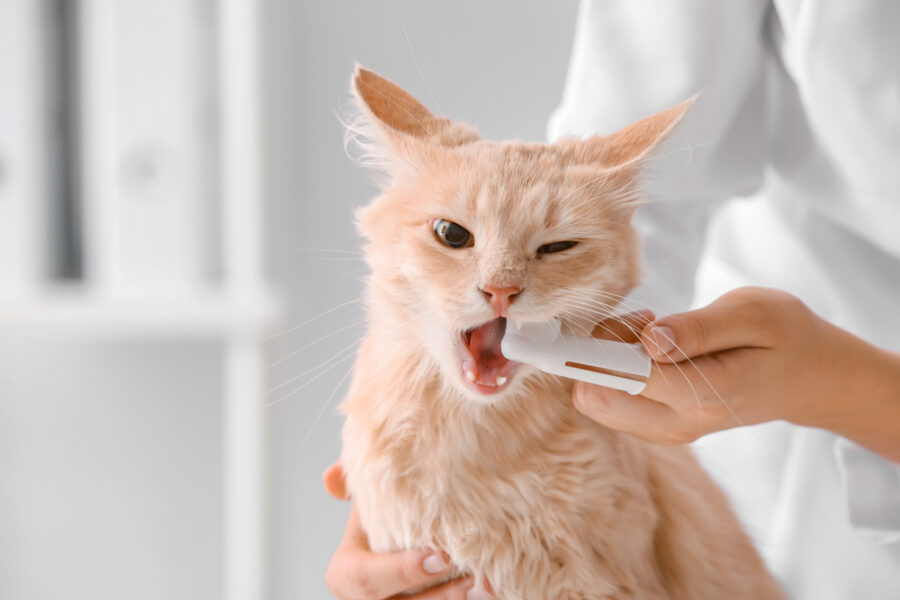From mold to bedbugs to human illness, these detection dogs can uncover any scent, and even identify a wide variety of health problems.
“Will we have to tear up the whole floor or just where the washer leaked?” asks the homeowner. Dressed in a special white hooded suit, the mold specialist examines the laundry room and indicates where the floor is damaged. Mold has spread between tile and subfloor. The entire floor will have to be replaced. The verdict is not given is so many words because the mold specialist is Scooby McGurk, an American hairless terrier. Scooby was trained by his person, Greg Milien, to find a specific scent using five boxes and a racquet ball.
Scooby first learned to zero in on the box the ball was hidden in to get his reward. Then mold was added so he would associate the scent with finding the ball and getting the reward. To further challenge Scooby, additional racquet balls were added to other boxes, but only the box with the mold scent would release the prize. Finally, several mold samples were used. If Scooby indicated all of them correctly, the reward was his.
Scooby learned to transition from classroom to work setting by searching an old trailer salted with mold samples. “Do I worry Scooby might get sick?” says Greg. “Yes, but I’m very sensitive to mold myself. If I react negatively, Scooby doesn’t go in. I use him when visual inspections don’t reveal obvious signs of mold.” Scooby’s accuracy on the job is about 90%.
Pest control
Most colleges, motels, apartment complexes and hotels keep pest removal services on speed dial, since when an outbreak occurs, a rapid and accurate response is needed. Enter Tracker, a Jack Russell terrier trained by Florida Canine Academy. “A human’s accuracy in finding every bedbug is about 20% to 30%,” said Caleb Fabry of K9 Bed Bug Investigations. “Tracker’s success rate is 97%. That means I can just treat the affected areas instead of the entire building.”
Burns Pest Elimination in Phoenix also uses dogs trained by the FCA. “We have five mixed breed dogs, all from Humane Societies,” said Bree Hutchinson. “Each dog has over 1,000 hours of training and each handler over 300 hours.” The dogs go to work five days a week but only spend two to four hours detecting. The dogs can sniff out as few as three bedbug eggs.
“The dogs learn minor obedience, odor identification, search patterns, scent discrimination, building search, socialization and vehicle rides,” said Bree. “The handlers learn how to work in different types of structure and how to care for the dogs, including canine first aid and CPR. It’s such a joy to have these dogs in our office. They are amazing inspectors; we consider them family.”
Helping diabetics
At the Service Dog Academy in Seattle, dogs learn to become a red alert for diabetics. They’re trained in a wide range of circumstances and locations – outside, inside, when the person is seated, on the bed, floor or tub, alone or in a crowd, at work, the grocery store and even in the car. It can take a year or more to train this type of detection dog.
“It’s our goal to create a thinking dog,” says Mary McNeight, owner and head trainer of the academy. “The first sign of a low in a diabetic person is a reduction in cognitive function. We want our dogs to be able to solve puzzles, to be our brains when ours are not at peak performance. We teach dogs to think, to try multiple avenues to solve the puzzle and to know it’s okay to be frustrated. A diabetic person may not respond to the first signal so we want the dogs to try again and again until he or she does.”
Buddy is a good example. Only eight months old and not yet fully trained, Buddy recently saved his person, Eric. The man’s blood sugar crashed while he was at work, and he passed out. Because the office door was closed, no one saw that Eric was in trouble. But Buddy’s problem-solving skills kicked in. “Eric’s coworkers heard a loud howl,” Mary says. “They found Buddy, a dog who rarely barks, trying to get someone’s attention and help.”
Rocky, a German shepherd, trained himself to help his person, Danni Rosemann, if her blood sugar levels fall as she sleeps. Danni’s doctor thinks Rocky responds to her shallow breathing. Thanks to the dog’s alerts, Danni wakes up and is able to reach for the juice and glucose tablets she keeps beside her bed. “I trust him with my life,” she says. “I don’t know what I’d do without him.”
Knowing when the end is near
Scamp does work of a different sort. As a pup, he was badly hurt. He needed constant care so his person, nurse Deidre Huth, took him with her to The Pines, a nursing home in Canton, Ohio, where the patients soon became invested in his recovery. Now that he’s well, he watches over the residents in turn.
“Scamp knows when a resident takes a turn for the worse, sometimes before the staff realizes it,” says Adeline Baker, the home’s manager. “He’ll jump up from a deep sleep, and run to a room and bark until we come. He once dragged his dog bed to an Alzheimer patient’s room and stayed with her until she passed away. Families find it a great comfort to know Scamp’s warning will give them time to say goodbye. He’ll stay in the room until family arrives.”
Although it’s believed Scamp can predict death because of a change in a person’s scent, no one has been able to explain why he barked and insisted nurses come to one particular man’s room while he was sitting in a chair reading, apparently fine. That night, Scamp went home with Adeline as usual. At five in the morning, he woke her with his anxious barking. Twenty minutes later, Adeline got a phone call. A resident had died – it was the man Scamp had alerted them to more than 12 hours before. “There are things in the universe we’ll never know or understand,” says Adeline. “But if we pay close attention, dogs will show us more than we could ever imagine.”







